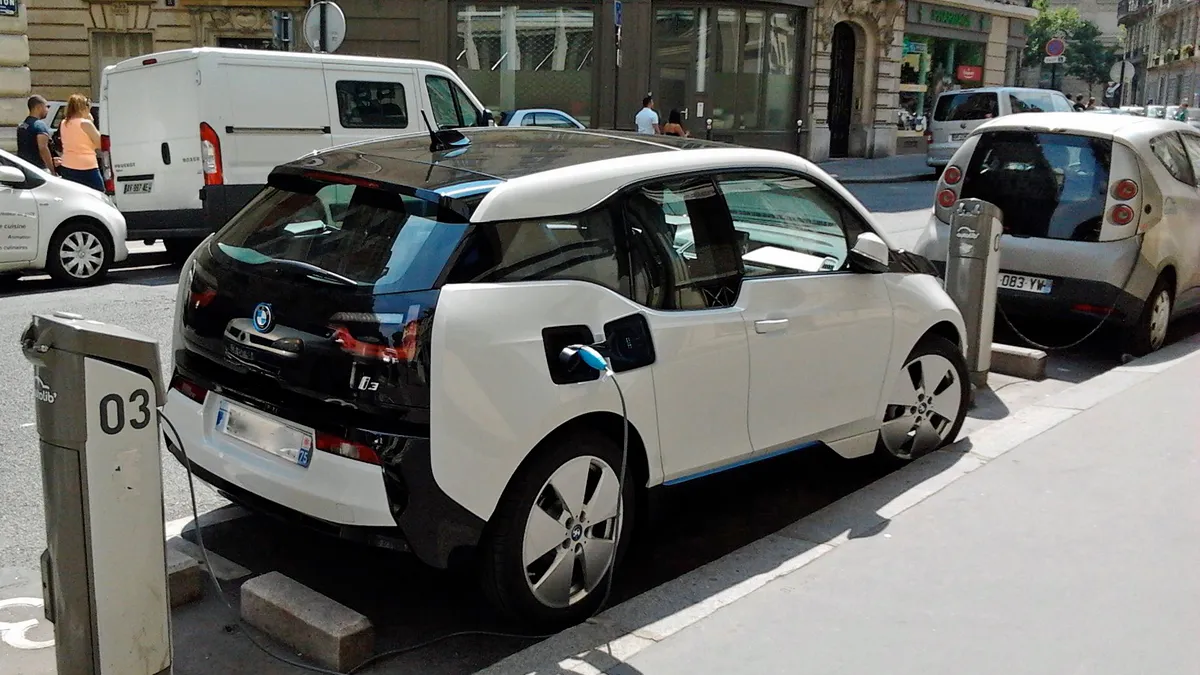Dive Brief:
- The number of electric vehicle (EV) models available to consumers is expected to more than triple in the next three years — from roughly 40 to 127 in the United States — as battery prices fall, charging infrastructure spreads and adoption rises, according to Dan Bowermaster, senior program manager for electric transportation at the Electric Power Research Institute (EPRI).
- It takes almost two decades for the U.S. auto fleet to turn over, "so this is not like an iPhone adoption," Bowermaster said Dec. 7 at a virtual seminar hosted by the U.S. Department of Energy and EPRI. There are now 187 counties in 33 states where EVs represent more than 1.9% of new vehicle sales, he said.
- Key to speeding adoption is the declining cost of batteries. DOE officials at the event said their research and investment is targeting $80/kWh by 2030 for a vehicle battery pack, but experts say more rapid declines may be possible
Dive Insight:
Battery costs represent a major factor in how electric vehicles stack up against internal combustion engines (ICE). While prices are falling rapidly, experts disagree on just how far they must decline before EVs reach price parity.
One of DOE's "prime missions" is developing battery technology, Michael Berube, DOE's acting deputy assistant secretary for transportation, said at the EV seminar. The agency is focused on the critical materials needed to manufacture batteries, including the processing capabilities and supply chains necessary to bring them to market.
"Battery costs have been coming down dramatically," Berube said. But he added, "we are not yet at the point where battery costs allow you to have an EV to be at cost parity with an ICE engine across the board."
But other EV experts say emissions-free vehicles are already cost competitive with their ICE counterparts.
EPRI estimates that the current cost per kWh for EV batteries is between $120/kWh and $200/kWh at the battery pack level, which includes an integrated battery management system and thermal management. According to Haresh Kamath, senior program manager of energy storage at EPRI, the range is broad as "different manufacturers are at different levels of maturity with their products and production processes."
DOE's goal for battery pack costs of $80/kWh by 2030 "is a reasonable goal," Kamath said in an email. EPRI estimates that "an optimistic figure would be approximately $55/kWh, and a conservative figure would be closer to $100/kWh," he said.
But Kamath also said that battery electric vehicles with 40 kWh packs, which amounts to about a 160-mile range, "are already at initial cost parity with ICE vehicles today, and have a far smaller lifetime cost of ownership when including maintenance, fueling, etc."
At $80/kWh, vehicles with 60kWh packs would achieve initial cost parity with ICE vehicles, EPRI estimates.
According to the Electrification Coalition, battery costs now are around $150/kWh and DOE’s goal is "very reasonable, given the trajectory we have seen and are predicted to see over the next few years," said Sue Gander, the group's managing director of EV policy.
"It corresponds well to the 'price parity' point that many experts put at around $100/kWh," Gander said in an email. "The most recent predictions for reaching that are as soon as 2024, with some predicting as early as 2023."
Getting prices to $80/kWh by 2030 "will be another stretch but in keeping with the trends and make EVs even more competitive on [a] first-cost basis. Many models already achieve savings on a total cost of ownership basis, given lower operations and maintenance costs," said Gander.
According to Brattle principal Sanem Sergici, battery costs will decline to about $65/kWh in 2030 and EVs will reach parity with ICE vehicles around 2025 with average manufacturing costs of each around $23,000 to $25,000.
Declining battery costs are "the most important story when you think about EV," said Joel Levin, executive director of Plug in America. He said costs have fallen from $1,183/kWh in 2010 to $135/kWh in 2020, dropping about 15% annually as batteries were manufactured to be smaller, more powerful and dense.
And Levin points out that even after EVs have hit price parity with ICE vehicles, "prices will continue to drop."
As prices decline further, issues of range anxiety will disappear and EVs will be able to go farther than gas-powered vehicles, said Levin. "And then the world starts to get interesting."
By 2026 it should be "significantly cheaper" to build an EV than a gas car, he said.













